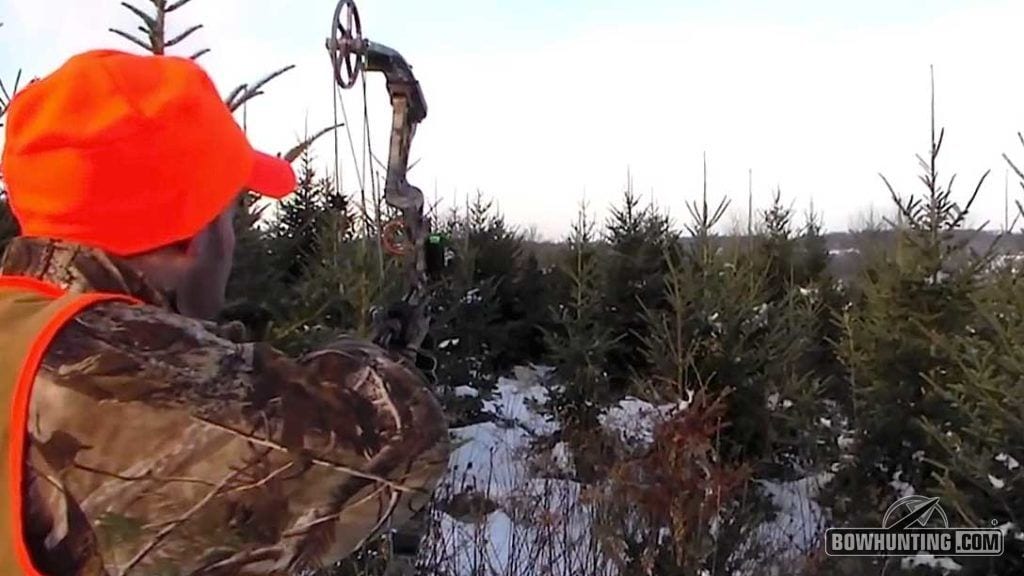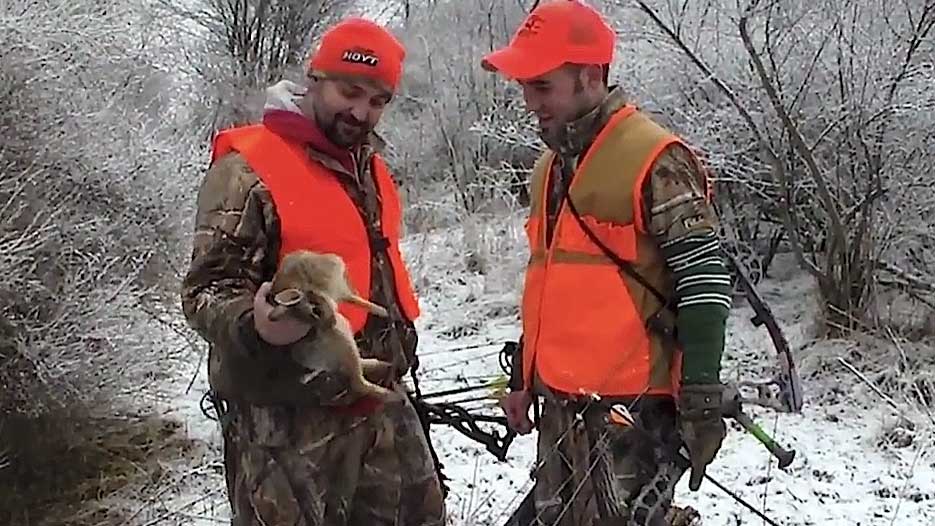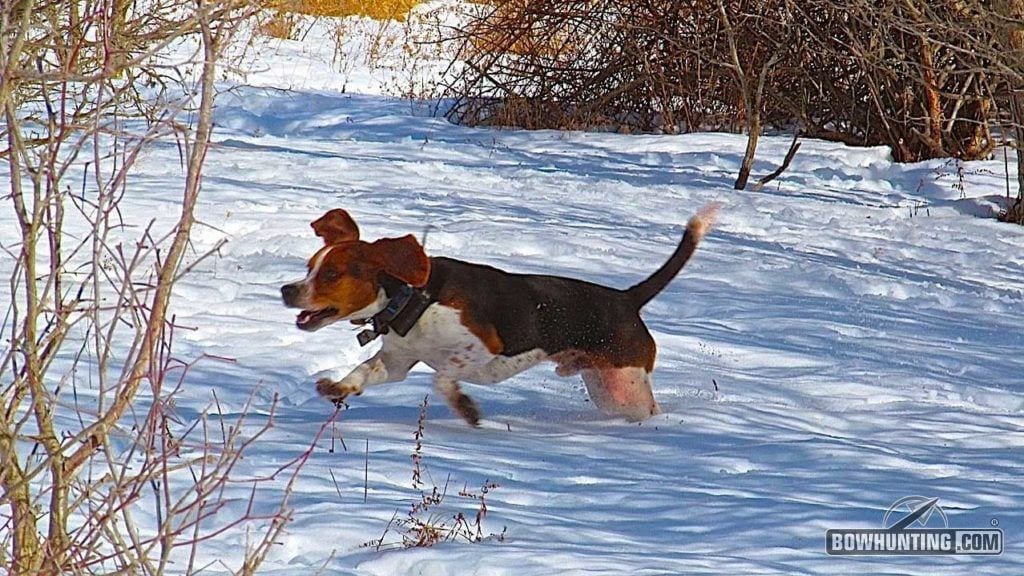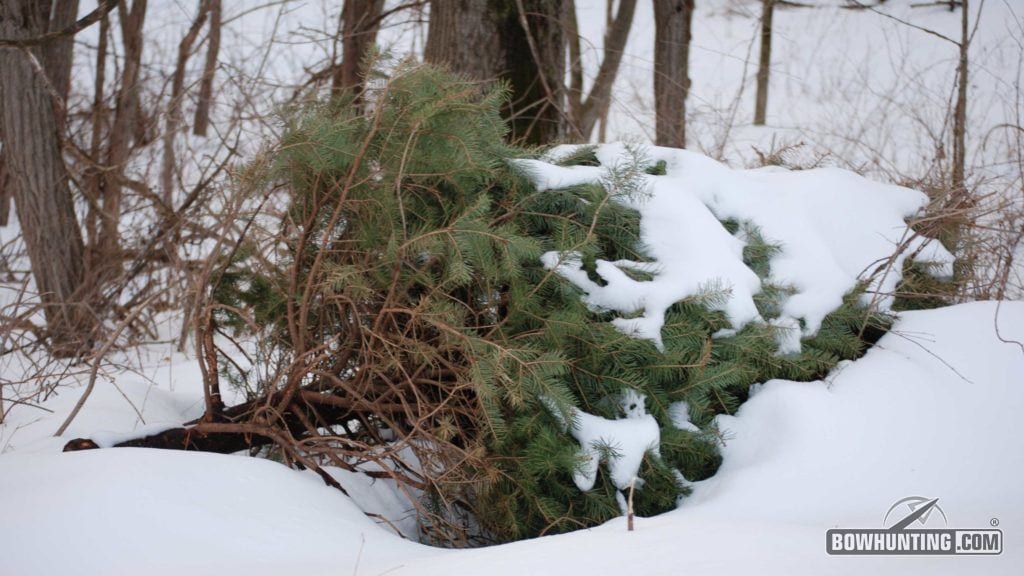As the last whitetail seasons come to a close, bowhunters can often find themselves yearning for something more. Those up for the challenge can extend their winter hunting experience by chasing a different kind of tail… cottontails! Now is the time to make the switch from bowhunting whitetail to cottontail.
Cottontail rabbits have fairly liberal seasons and bag limits as a result of their amazing ability to reproduce over a short period of time. Mature females bear an average of four litters per year, with each litter ranging in size from two to nine young, with five being the average.
This means there are plenty of rabbits out there for the taking- but the best time to hunt them, in my opinion, is during the latter part of the season when a fresh dusting of snow blankets the ground.

A fresh snow and plenty of thick cover is the perfect combination for bowhunting rabbits.
Rabbits can be a lot of fun to pursue with a bow, and though they might be difficult to hit, hunters can still experience a great deal of success when they work together and know what to look for.
Cottontails love swampy, brushy terrain and can be found wherever thick strips of cover are located near a quality food source. In wintertime, rabbits will feed on buds, twigs, bark, and wild raspberry canes. If there is a steady food supply and adequate security cover, rabbits won’t have any reason to venture far.
Keeping this in mind, prime target locations for bunnies will include old fencerows, grown up field edges, low-brush creek beds, and plots dense with young evergreens. Another terrific place to find rabbits, if accessible, is an old abandoned homestead with dilapidated outbuildings. All of these areas offer sanctuary cover, as well as plenty of obscure burrows for cottontails to hole up in when threatened.
Looking back over many years of small game hunting, my favorite locations for consistently getting into cottontails have always featured sloped hillsides with new growth vegetation or low-lying gullies, thick with briars, surrounding a water source. These areas include neglected pasturelands and recently timbered hillside strips no more than 50 yards wide. They are perfect for sneaking within bow range.

Rabbits with a bow just might be your toughest bowhunting challenge of the year.
What’s really nice about these locations is that they are generally bordered by fields or old logging roads, which offer the perfect set-up for 3 or 4 guys to work together as a team in order to get things moving. They also provide the necessary visibility required for organized rabbit drives.
The best way for a small group of bowhunters to cover sloped hillsides for bunnies is for one or two guys to walk through the cover, while two others stand and flank. These roles should be alternated so everyone gets a fair chance at each task. Drawing one’s bow while busting through a tangle of brush is nearly impossible, so it’s good hunting etiquette to give everyone a turn battling the briars.

Don’t have rabbit dogs? No problem! A group of hunters can work together to bust brush and push rabbits in the open for a shot.
The designated stander should be posted high at the end of the patch to catch any rabbits running straight ahead on the upper edge of the cover strip. Another hunter should flank the bottom field edge or logging road, being sure to stay well ahead of the drivers where he can see the hillside for rabbits running low.
Sometimes, the drivers will get a shot or two at rabbits holding tight while working through the cover. Though they can run pretty quickly, most rabbits simply bound off a few paces and stop for a brief moment before taking off again. Drivers should stay ready and keep their eyes open for bunnies slipping ahead in the drive, which can occasionally offer a quick shot.
It is also important for drivers to thoroughly scour any areas a rabbit might be hiding out, because if they don’t, bunnies will often let hunters walk right past them. This includes checking brush piles, clusters of thick briars, low hanging evergreen boughs, and even old piles of rotting lumber or rusted farm equipment.
On our farm growing up, we would often pile old Christmas trees and yard trimmings together in scattered mounds as a means to improve cottontail habitat. During the season, all we’d have to do is give these piles a good kick, and more times than not, a rabbit would tear out from underneath the brushy heap.

Create your own rabbit cover with an old Christmas tree or brush pile.
As stated earlier, a few fresh inches of snow really helps the process. It makes seeing the rabbits easier, since their brown coats contrast well against the white landscape. And for some reason, it seems as though cottontails are always more apt to be out and about on sunny mornings after a recent snowfall.
This comes as a minor caveat for bowhunters, since errant arrows become even more difficult to find in the snow. But using judo-style points and small game tips with lighted nocks definitely boosts the recovery rate of lost arrows. You WILL miss some shots, so be prepared, but it’s still a lot of fun.
If you’re looking for a late winter challenge, consider calling a few friends and heading out with the bows to try for some excellent long-eared table fare. You don’t even need a beagle to find success…but if you really want to, you can always give a few howls while you’re struggling through those sticker bushes!






